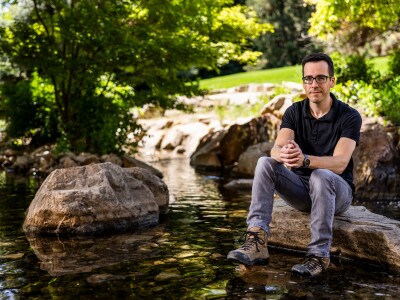- Graduate students designed a specialized circuit that launched with Endeavour.
- The circuit is part of a chip that can be reprogrammed remotely.
- The chips will be tested to see how they hold up against harsh space conditions.
When the shuttle Endeavour launched Monday morning there was a little bit of BYU on board. A BYU research team designed a highly specialized type of circuit that could improve the reliability of current NASA technology.
The launch attracted extra attention because it’s the second-to-last shuttle mission, and it is commanded by the husband of Gabrielle Giffords, the Arizona Congresswoman wounded in a shooting earlier this year.
Michael Wirthlin led the team that designed the circuit inside a chip known as a Field Programmable Gate Array (FPGA). Such chips are unique because they can be programmed remotely. This prevents time-consuming space walks where astronauts would have to work on hardware devices. All of the necessary work can be done from NASA command center on Earth.
“It is a really unique opportunity for our students to design a circuit that can go up in space,” said Wirthlin, associate professor of electrical and computer engineering. “Those students will now evaluate the effectiveness of their circuit. It is very rare to participate in this whole process.”
Current graduate student William Howes was one of those students.
“It was definitely a great opportunity and something that not too many students have the chance to do,” Howes said. “To be able to tell others that there’s something in space that I designed is amazing. It has helped me a lot in searching for jobs and in my graduate degree.”
FPGAs have been used in space before. For example, the Mars Rover had older versions on board. The FPGAs that BYU is researching are much more powerful. They will be on the Endeavor for long-term data collection to see how they react to harsh space conditions.
“For FPGAs, radiation is a problem,” Howes said. “If the FPGA gets hit in the wrong way, it could make the computation come out incorrect.”
BYU’s team hopes to make the FPGAs radiation-tolerant. If the experiments are successful, the techniques created by BYU students could show how the FPGAs can be used safely and reliably.
Writer: Matt Hopkins







